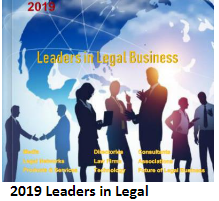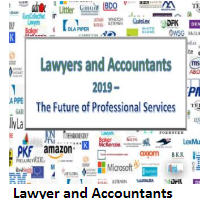Susan Hackett Principal, Legal
Executive Leadership, LLC
Susan Hackett is a founding partner and the CEO at Legal Executive Leadership, LLC, a business dedicated to advancing law firms’ productivity and practices. Prior to establishing LEL, she worked as the senior vice president and general counsel to the Association of Corporate Counsel for 22 years. She is a recognized authority on in-house counseling, corporate client service, and law department operations, who applies her creativity and deep knowledge of leading success practices to better equip her clients (in law departments, law firms, and legal industry service organizations) to advance strategic goals and resolve operational challenges. Susan is a double Bachelors and Juris Doctorate graduate of the University of Michigan. With her experience, talent, and dedication to public service projects and non-profits, she has set herself apart as one of the most sought-after keynote speakers and spokespersons on corporate legal practices.
Introduction: In-House DNA
How Departments Insource, Determine What Departments Outsource
Even though the
ACC (Association of Corporate Counsel), the ABA (the American Bar Association,
the IBA (International Bar Association), and national bars conduct regular
census surveys of their members, there is no definitive understanding of the
actual number of in-house counsel or law departments practicing in any
particular jurisdiction or globally. Many law departments literally operate
below radar; they are not visible outside the company and little is known about
their structure. Even less is known about aggregates of how law departments are
run in terms of shared common practices; unlike the business models of law
firms, which are usually not terribly different from firm to firm within
segments of the profession (solo practices, mid-tier firms, boutiques, BigLaw,
global firms, etc.), the business models of law departments can be as diverse
as the companies they serve. Since they are not in the business of practicing
law to make money, their drive is to deliver the services that their particular
client needs in real time … and so they are often a reflection of the
management style or the industry in which their management teams work.
This means that
while most departments outsource more work than they insource (regardless of
their department size), they may choose to outsource different kinds or work,
or select different kinds of providers or products in a manner that defies easy
categorization. Low-tech companies may have the most tech-savvy departments,
and there are lots of finance-, information-, and technology-based companies
whose legal teams are relative tech Luddites. Some departments are in
relentless pursuit of lower costs, and others may choose to hire the most
expensive providers in the marketplace without much regard to the financial
health of their parent companies.
It’s Not What Vendors Want to Sell, but What Clients Want to Buy …
Law firms are
retained either to be an extension of the in-house department that doesn’t have
enough hands to get work done, or they are retained to provide services or
expertise that the law department doesn’t have and doesn’t wish to hire folks
to provide internally on an ongoing basis.
Because there is a ton of attention to historical over-charging and over-spending with top-line law firms, a trending in-house practice is to increase the scrutiny on and improve the management of law firms. This can range from convergence projects that concentrate more work with fewer firms that are more tightly regulated and partnered to align with the legal department, to collecting data and developing strategies to concentrate attention on cost control, better work processes, and project management. Because so much work and therefore so much of the department’s expenses are concentrated on law firms, many departments are increasing their use of technologies that allow them to better communicate and coordinate with their firms, from matter management and e-billing systems, to knowledge management and collaboration platforms that allow firms and clients to work more seamlessly as a team. While it’s clear that not as many departments use these kinds of technologies as well or as fully as they should, and that even more don’t use them at all, they are the focus of most department technology conversations (rather than technologies that are limited in use to the in-house team), and they drive whatever data the in-house team regularly collects
2. Partnering legal work with law firms:
Both firm and
department leaders will tell you that there should be a great partnership
between a firm and its corporate legal clients, but it’s only been in recent
years that the talk has been forced into practical application. There’s a rise
in the number of departments bringing law firm lawyers onto their staffs — for
the duration of a large project, for instance, or as a tour or rotation that is
part of the firm lawyers’ advancement on the client relationship team. It’s
also more and more common to see matters staffed by a defined team of in-house
and outside counsel who operate on a virtual and highly collaborative plane;
sometimes the demarcation between the in-house and outside folks is blurred and
seen as irrelevant in such a collaboration.
Many departments have drastically increased their use of staff lawyers and contract lawyers. Once seen as second-class workers, these kinds of placement companies are now known for peddling incredibly well-trained and sophisticated lawyers (partly because of the changing economy and partly because of changing lifestyle interests of millennials, among various other factors). Whether it’s to cover for a new parent or a caregiver who has to leave the workplace for a few months; staff a regularly occurring task that’s only one day a week; or provide surge capacity for an intense deal that’s snowballing toward deadline, being able to pick up a phone and have a competent lawyer show up in two hours to stay for any relevant period (and then leave without further obligations!) when no longer needed is incredibly efficient and convenient for department leaders. While these lawyers used to just do document review or other mundane tasks, you can now replace the need to retain expensive outside firms with a deeply competent staffing company that can provide most any kind of worker expertise imaginable.
As of this writing, a few jurisdictions have authorized the creation of ABS (alternative business structure) firms that allow lawyers and other kinds of experts (whether via financing or via the creation of a multidisciplinary practice, or MDP) to co-own/share profits in the same firm. This means that clients may now consider hiring such firms for regularly repeating work or to do work out of the country if the ABS firm doesn’t operate in the client’s home jurisdiction. The entrants in this market — unlike some of their vendor counterparts that start small and have to grow the hard way — are often large and well financed. This draws participation from the likes of the traditional accounting firms/consulting practices (such as PricewaterhouseCoopers, KPMG, Deloitte, etc.) and newly-structured law firms with outside investors (such as Riverview Law) and more, to do their work. How these firms will fit into clients’ portfolios and the larger legal landscape (whether their entry will change everything or very little) remains to be seen, but clearly they will create greater competition via more definite and clearly articulated pricing and service strategies; a re-shifting of top talent as new practices open and steal top-name experts and practice groups; and probably some firm merger mania, all of which will inevitably affect clients’ decisions about which firms to hire with the correct value proposition for their work…
[1] See Susan Hackett, Corporate Counsel and the Evolution of Practical Ethical Navigation: An Overview of the Changing Dynamics of Professional Responsibility in In-House Practice, 25 Geo. J. Legal Ethics 317 (Spring 2012) (for more on the differences and similarities of inside counsel compared to other lawyers, and how [or not] the rules of professional regulation apply to and shape their work).

 Software
Software Law
Law Legal
Legal






